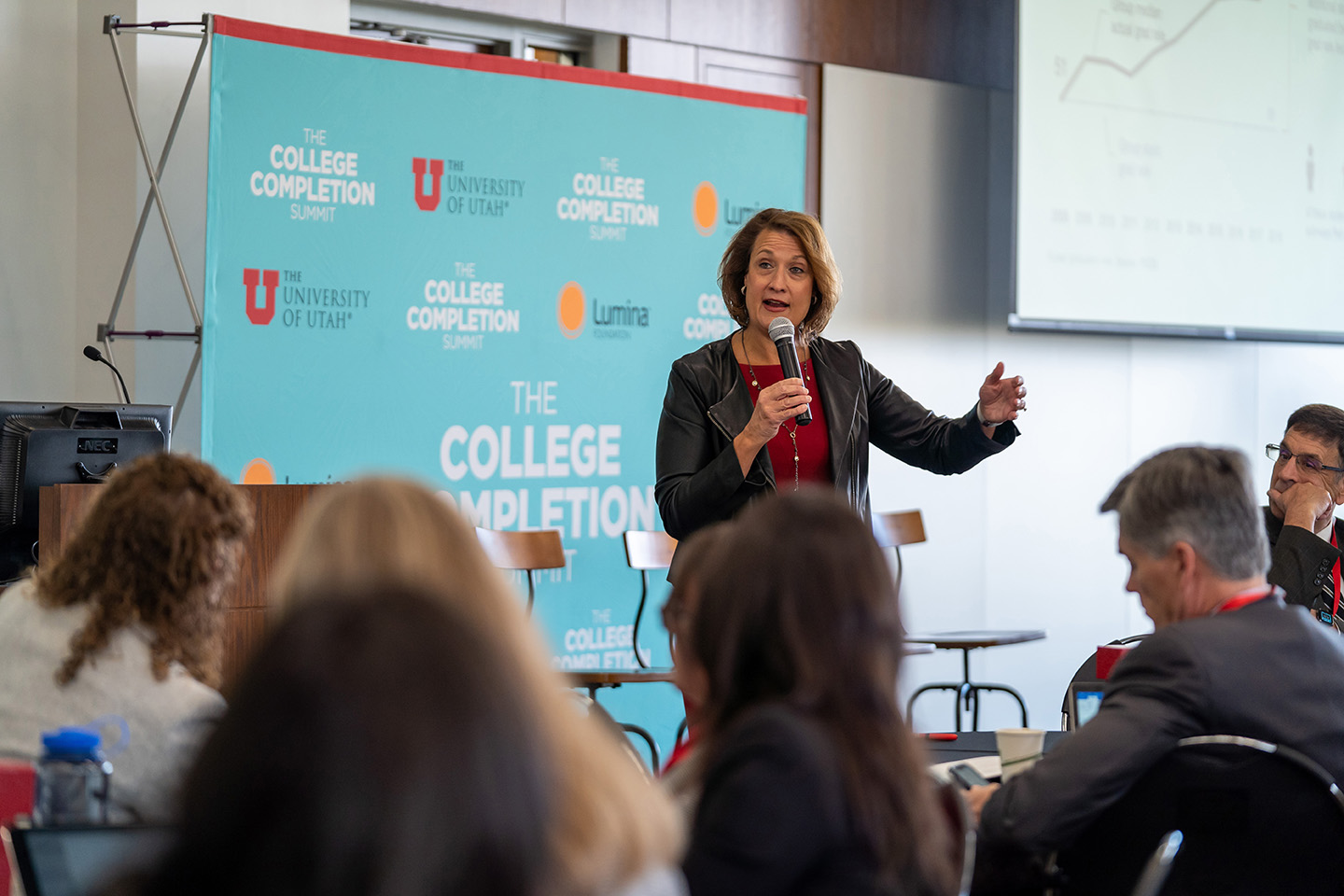Editor’s note: This is one in a series of stories about The College Completion Summit held at the University of Utah on Sept. 30-Oct. 1, 2019. The University of Utah and Lumina Foundation hosted the summit, which drew representatives of 22 institutions to the U’s campus to discuss college completion challenges and opportunities. University of Utah President Ruth Watkins and Terri Taylor, strategy director for postsecondary finance, of Lumina Foundation, gave welcoming remarks.
For higher education institutions that have made strides in increasing graduation rates, what are the next steps to keep the momentum going?
That question was center state at The College Completion Summit hosted by the University of Utah and Lumina Foundation on Sept. 30-Oct. 1, 2019. Senior leaders from 22 institutions—all of whom have made notably progress in graduation rates in recent years—attended the event to share best practices and strategies and discussion challenges in keeping the momentum going.
Colleges and universities in the U.S. have a transformative opportunity to help the coming generations of students finish their degrees—an accomplishment that sets them on the path to higher earnings and better physical and mental health over their lifetimes.
“This gathering really transcends most of the usual ways we get together, but I think that this is an even more important tie that binds us together,” University of Utah President Ruth Watkins said in her opening remarks. “You are institutions who have successfully advanced your college completion rates in the past decade. Remarkable change in your institutions in moving up graduation rates. A real success for students.”
The median six-year graduation rate of the institutions represented at the summit—who collectively serve almost 800,000 students—was 51% in 2008; today it is 70%
Watkins shared that the U’s trajectory is right in-line with the group. When the U joined the Pac-12 six years ago, its graduation rate of 55 percent was at the bottom of the institutions in the conference. Today, the U’s graduation rate is 70 percent, closer to the top of Pac-12. The U’s goal is to move that rate to 80 percent.
“I think it has been a very consistent message that we wanted to help our students succeed,” said Watkins. “I think the way you welcome students, greet students, whatever role you’re in, the way you help students see connections, possibilities, and the way they belong makes a difference in student success.”
Watkins said a key to increased success is identifying and simplifying the signals of success within academics and engagement. She also pointed out that institutions that have driven change successfully have had a continuity in leadership. “People have come and stayed with this because this is not a fast enterprise,” Watkins said.
In her welcoming remarks, Terri Taylor, strategy director for postsecondary finance at Lumina Foundation, said the foundation’s goal is to get 60 percent of all American adults to complete some kind of post-secondary education by 2025.
“I think everyone is focused on equity and trying to figure out how to close gaps,” Taylor said.
Lumina is the largest private national foundation solely focused on post-high school education. Earlier this year the U received a $335,000 grant from the foundation to help with its Invest in U program, an income share agreement pilot program designed to help students finish their degrees faster.
Watkins encouraged attendees to share information with each other about how their colleges achieved success, what worked and what they are thinking about trying to increase graduation rates in the future.
“I hope we can talk a little bit about things that are emerging in your work about automating programs and interventions that have students participate, rather than waiting for people to elect them because I think we lose people along the way,” Watkins said.
“I think one of the ways of driving change is to have everybody know that it matters to you, that this is a key focus of the institution,” Watkins added. “Focus significant effort to emphasize the priority and the importance of student success, that students really are at the center of everything we do—and need to be at the center.”
